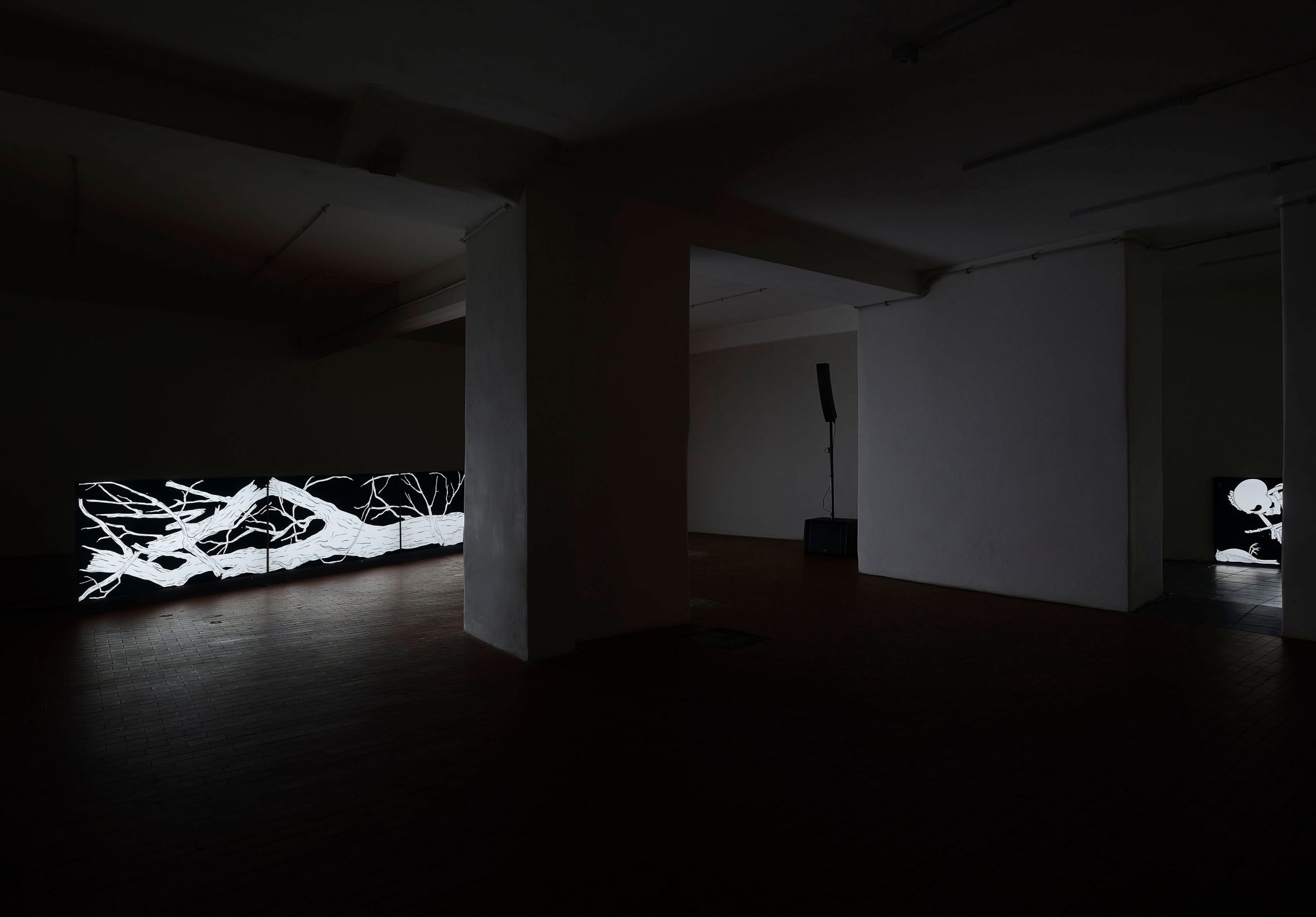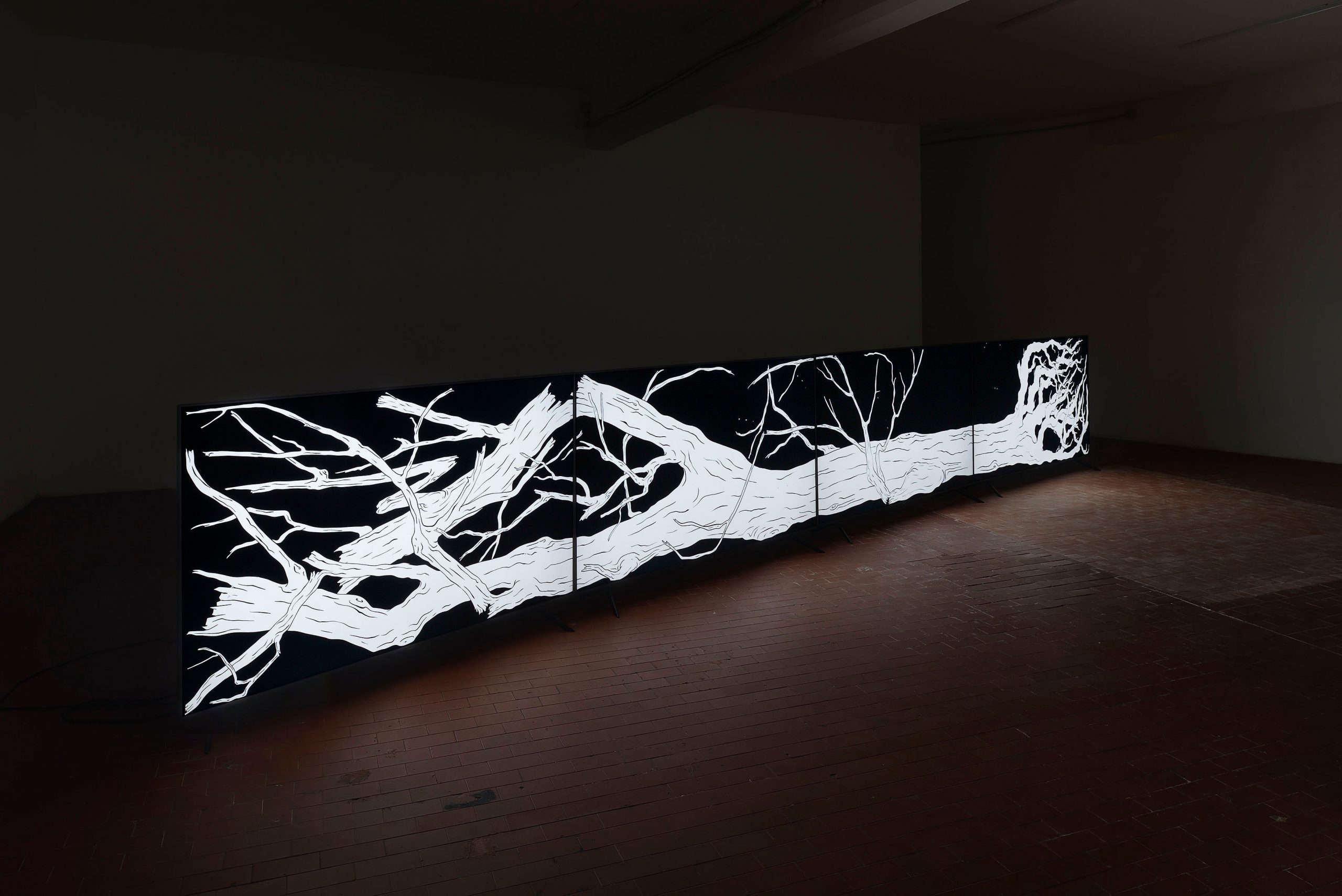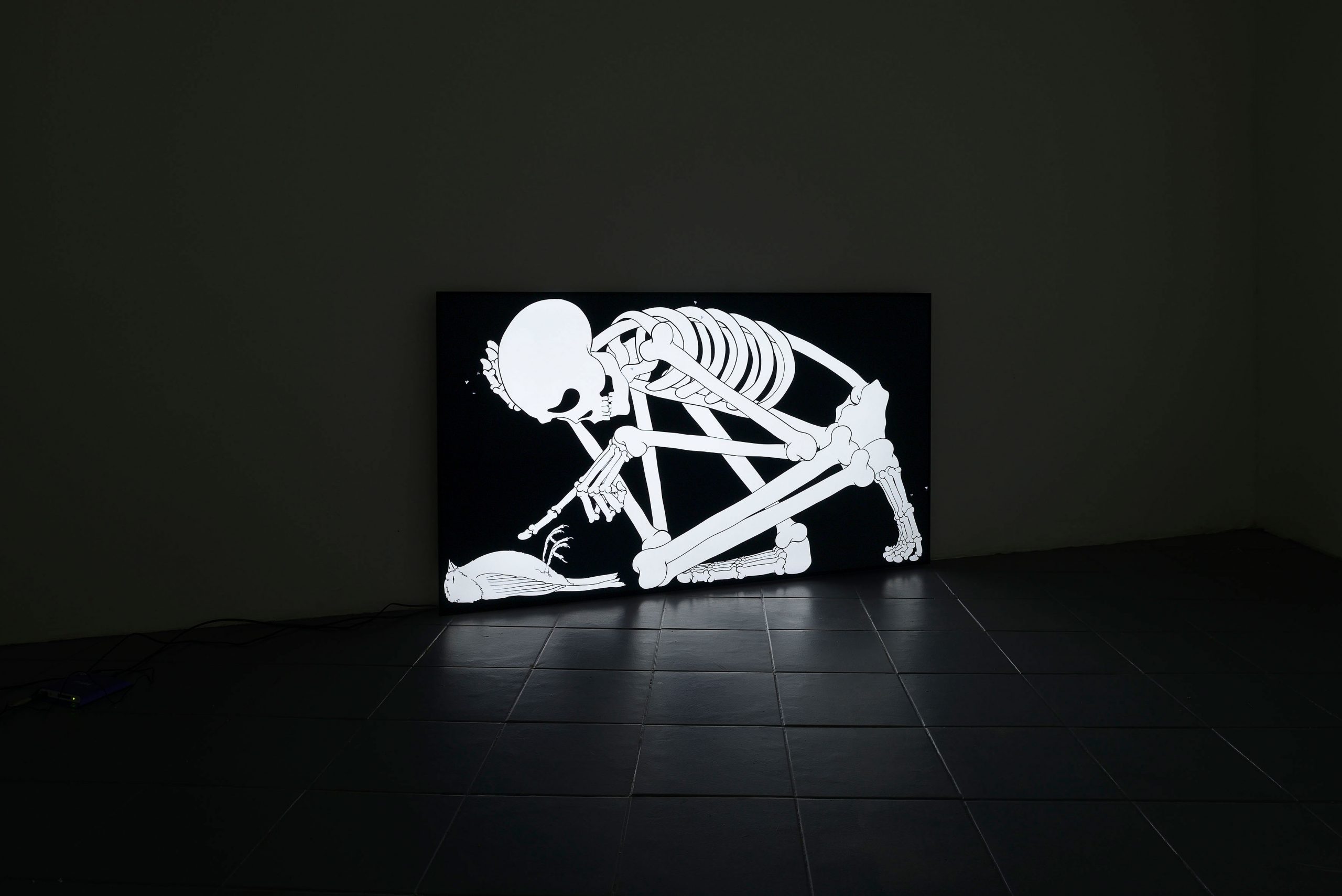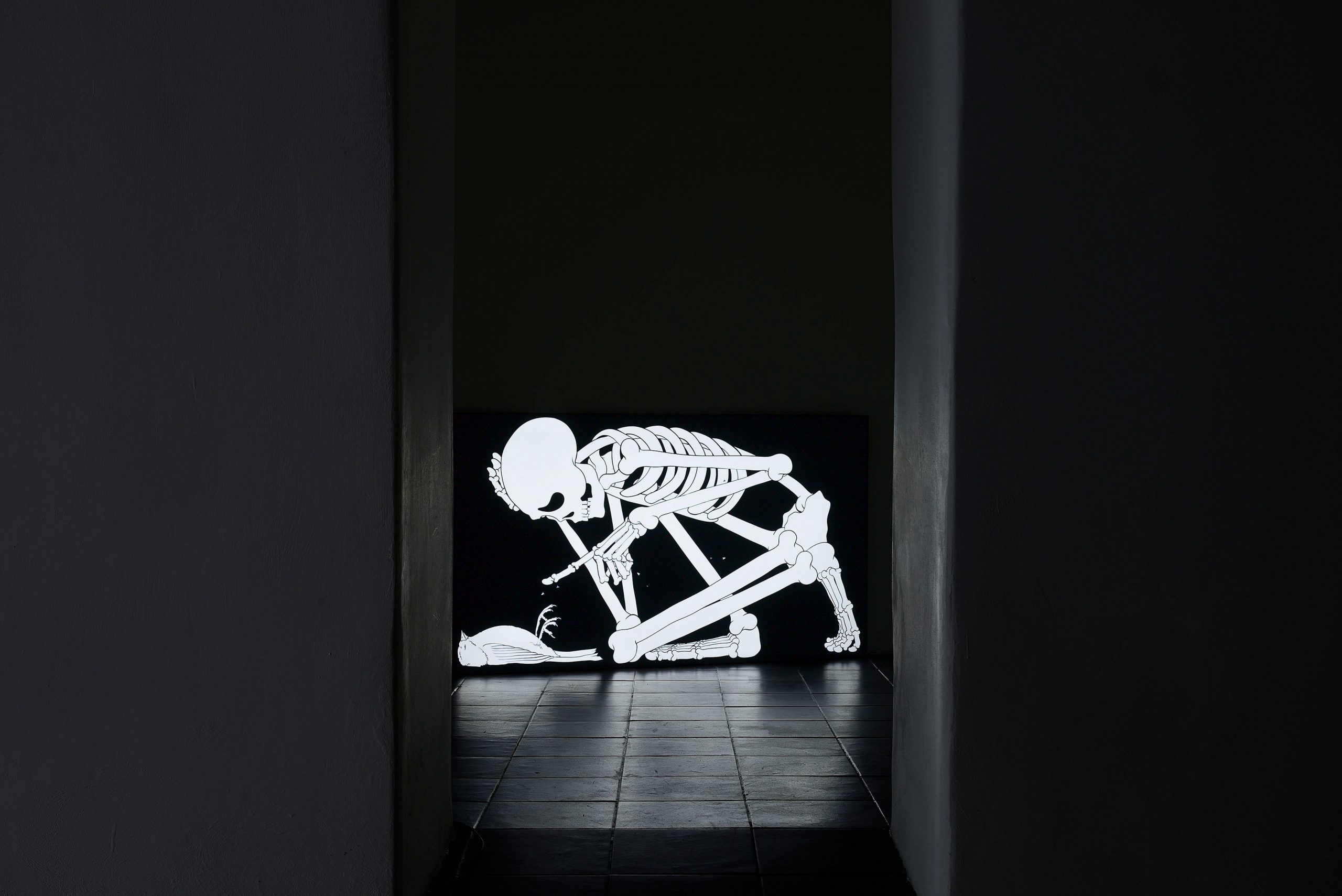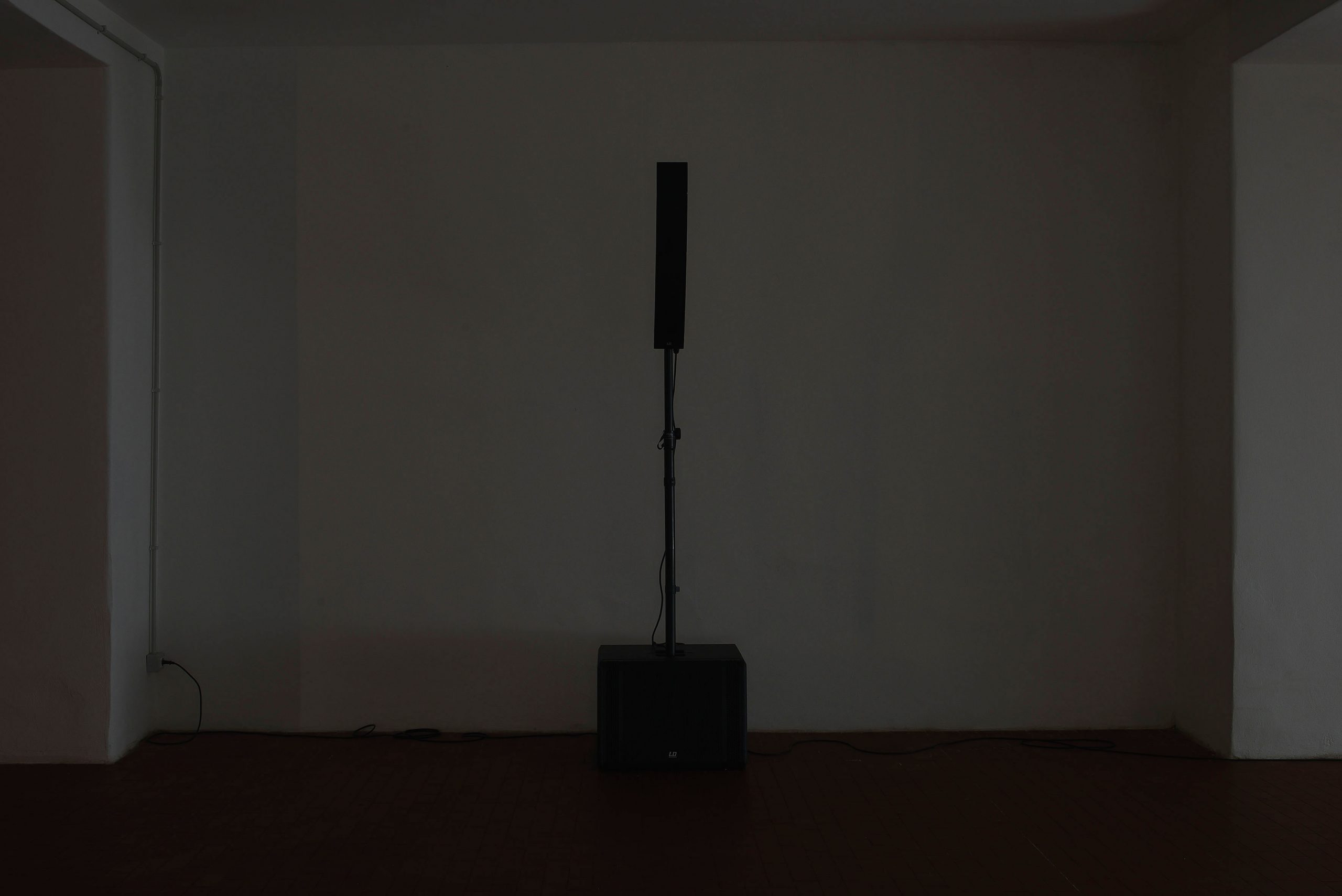Özgür Kar
FALL
May 09 — July 07, 2023
Basement Roma is pleased to present FALL, the first solo exhibition by Özgür Kar in Italy, and the final work of a trilogy following DAWN, and DEATH’S CROOK. Together, the triptych rehearses a search for hope among the existential dread of Kar’s work: a trace of nature’s mercy within the artifice of technology and theatre.
The sculptures which assemble in Kar’s exhibitions, built of sleek 4K television sets, hi-fi cabling and metal cases, are theatre troupes: each sculpture is a character in an absurdist play. Perceptive to the ways in which existentialism has trickled into various eras of visual culture, Kar gives his characters lines equally inspired by Samuel Beckett as by Beavis and Butthead and YouTube vloggers. Minimally animated skeletons are as if cast in mediaeval representations of danse macabre entombed in sleek television screens — the cartoon’s two-dimensionality like the lid on a coffin of digital existentialism. Sensitive to the universal pain at the heart of human experience, Kar’s exhibitions are monologues on the accompanying universal joys, striving, fear, hope, and longing.
The seven metre-long set of screens in FALL encloses a cartoon of a life-size fallen tree — ambiguously uncut, undead, plucked from the soil with its roots intact. While the tree branches are entombed within the screens’ edges, the screens themselves are crammed diagonally in the dark space of the basement, a sarcophagus enclosing technology larger than life. The swarming noise and viciousness of animated flies surrounds it like a carcass, like leeches on a living body. In place of Kar’s past references to the mediaeval motif of danse macabre, the tree takes on the role of a memento mori — a symbol of the time, toll, and inevitability of decay. With meek hope, Kar attempted to transform his play from existential anguish into something lively — but in an absurdist turn, his theatre troupe seems unable to come alive. The television screens are stark and cold in their nocturnal tomb: we may be looking at a stage where a scene has ended or not yet begun.
A nocturne means a painting set in the night or a short musical composition. Typically written for the piano, it is either to be performed in the night or to evoke our feelings of the night: feelings lyrical, pensive, serene. Whereas in other works, Kar’s characters assemble to perform their monologues and instrumental scores, here the simple piano arrangement is ambient in the background — a prop, part of the same stage set as the tree. Musical references to composers such as Eric Satie or the Disneyfied In A Monastery Garden by Albert Ketèlbey are drawn from the YouTube algorithms that feed us relaxing piano music to survive another apocalypse to.
Beyond a night-scene, this is a garden-scene: like in the biblical tropes of The Agony in the Garden (in Gethsemane) or The Fall (in Eden), nocturnal gardens remind us of the connection we make between serenity and death. Each of these scenes is simple, a contrast chthonic but lyrical: of Persephone or Eurydice stuck in their crossing of river Styx. Finally, against the zeitgeist of nihilistic irony and cynicism, the honest messengers of hope turn out to be the simplest sights: a dawn, a lamb, a tree — nature, persevering.
Text by Tosia Leniarska
Özgür Kar (b. 1992 in Ankara, Turkey) lives and works in Amsterdam, Netherlands, where he studied at the Rijksakademie van Beeldende Kunsten. Kar’s recent and upcoming exhibitions and screenings include: Intermissions, The Renaissance Society, Chicago, IL, US; Fridericianum, Kassel, DE; WA Museum Boola Bardip, Perth, AU; and Château Shatto, Los Angeles, CA US (all 2023). Among his solo presentations: Stedelijk Museum, Amsterdam, NL (2022); Foundation Louis Vuitton, Paris, FR (2021); Kunstverein Gartenhaus, Vienna, AT (2021).
In collaboration with Emalin London and Édouard Montassut, Paris.
All images:
Özgür Kar, FALL
Installation view Basement Roma, 2023
Courtesy: the artist, Emalin London and Édouard Montassut, Paris.
Photo: Roberto Apa


